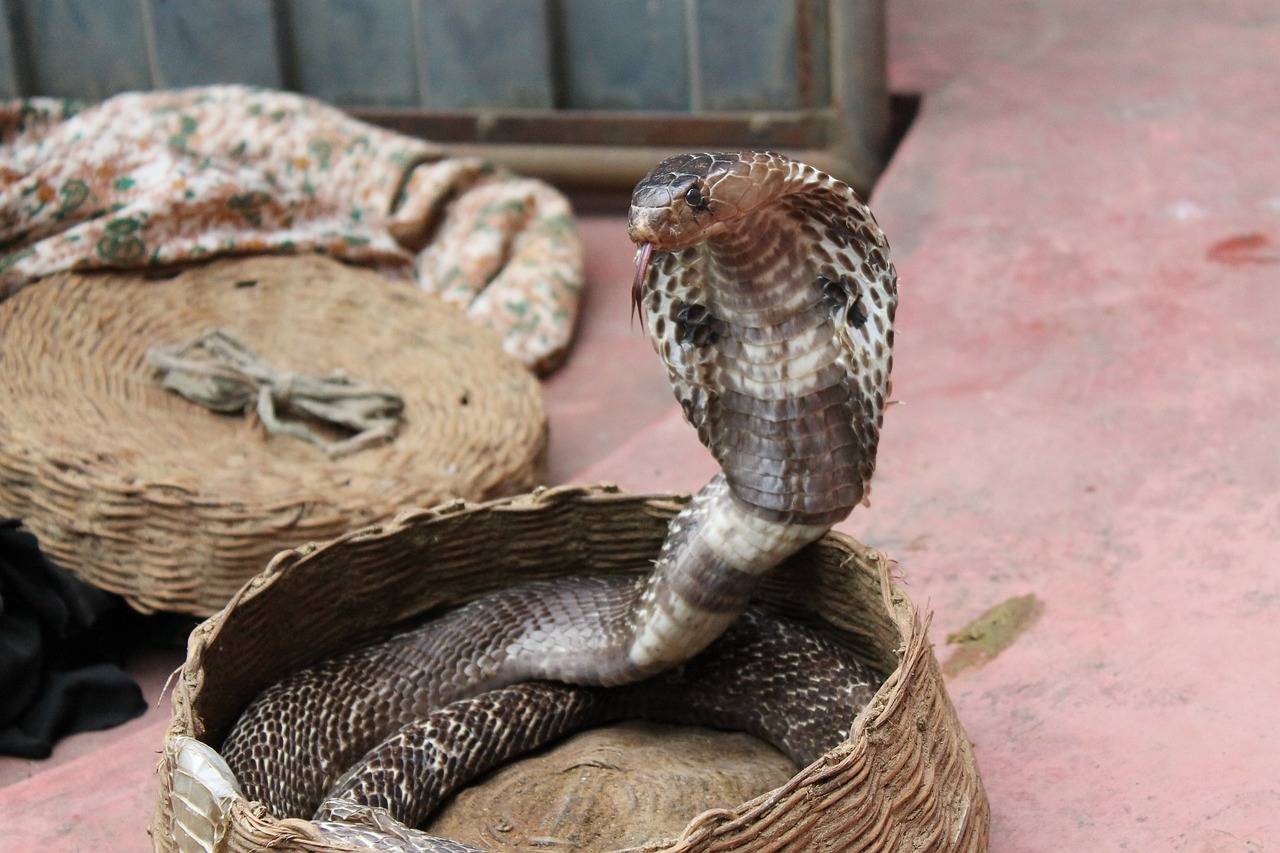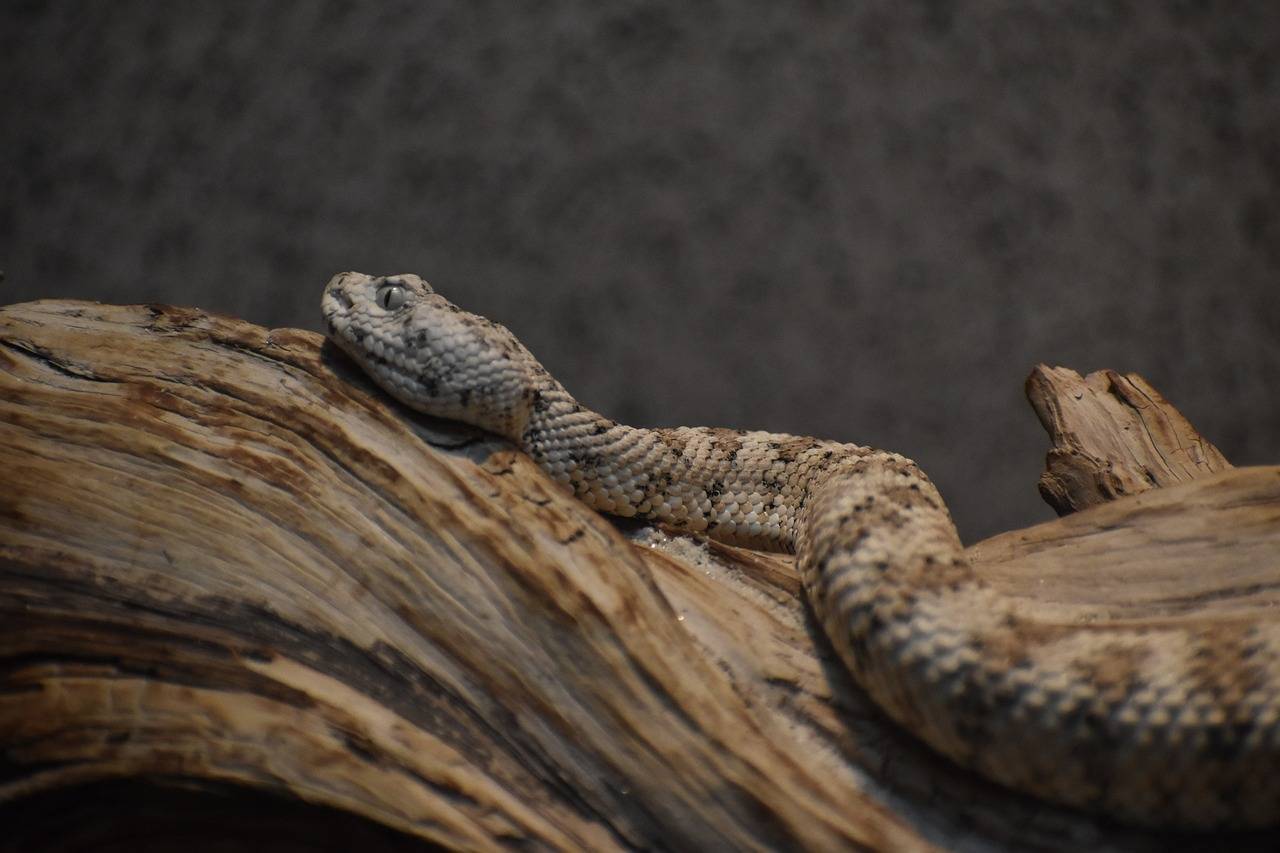Forest Cobra
Living in the verdant African rainforests, the Forest Cobra, or Naja melanoleuca as it is scientifically called, is an amazing reptile. Its peculiar characteristics and captivating habits have captured the interest of both snake enthusiasts and herpetologists in this strange species.
The habitat, behavior, diet, and myths surrounding the venomous nature of the Forest Cobra will all be covered in our article as we delve into its secrets.
Understanding the Forest Cobra
Habitat and Distribution
The African Forest Cobra primarily inhabits the dense rainforests of Central and West Africa, including countries like Nigeria, Cameroon, and the Democratic Republic of the Congo. Unlike its close relative, the more well-known King Cobra, the Forest Cobra thrives in the shadows of the thick vegetation, making it a challenging subject for researchers to study.
Physical Characteristics
1. Coloration and Markings:
The Forest Cobra is renowned for its sleek and slender body, which can reach lengths of up to 8 feet. Its coloration varies, but it typically displays shades of brown or black, with a noticeable sheen. The scales often feature subtle patterns, contributing to its captivating appearance.
2. Distinctive Features:
A hooded appearance is a hallmark of the Forest Cobra, achieved by expanding the ribs in its neck. This defensive display is not as pronounced as that of the King Cobra but is nevertheless an effective warning signal.
Are Forest Cobras Poisonous?
The dangerous nature of the Forest Cobra is one of the most frequently asked questions about it. The Forest Cobra is poisonous, yes. Strong neurotoxins found in its venom can cause paralysis or even death in victims. A bite from a Forest Cobra necessitates prompt medical attention even though it is not as deadly as some other venomous snakes.
Forest Cobra Facts
1. Behavior:
Forest Cobras are known for their elusive behavior. They are primarily terrestrial but are proficient climbers, using their agility to navigate the complex forest environment. Despite their venomous capabilities, these serpents are generally not aggressive and prefer to avoid confrontation.
2. Diet:
The diet of the Forest Cobra consists mainly of small mammals, birds, and occasionally other reptiles. It employs its potent venom to immobilize prey before swallowing it whole.
3. Habitat:
The African forest cobra is primarily found in the rainforests and wooded areas of Central and West Africa. Its adaptability allows it to thrive in both terrestrial and arboreal environments.
Do Forest Cobras Fear Humans?
Contrary to popular belief, Forest Cobras do not necessarily fear humans. However, they are naturally shy and tend to avoid confrontation. Like most wildlife, they may become defensive if they feel threatened. Human encounters with Forest Cobras are relatively rare, given their preference for remote and densely vegetated habitats.
What Do Forest Cobras Eat?
As an advantageous predator, the forest cobra feeds on a wide range of small animals. Its diet consists of reptiles and fish birds, and rodents. The Snake uses its excellent sense of smell to find its prey and strikes quickly when the chance presents itself.
What Is the Difference Between a Forest Cobra and a King Cobra?
Although they are both members of the species Naja, the Forest Cobra and the King Cobra are distinct in a few important ways. The King Cobra’s distinctive spectacle markings are present on the Forest Cobra, but it is larger and has a less noticeable hood.
The two species’ habitats are also different, with the King Cobra thriving in a range of settings throughout Southeast Asia and the Forest Cobra preferring the tropical rainforests of Africa.
Brown Forest Cobra
A variation of the Forest Cobra often referred to as the “brown Forest Cobra” showcases a lighter coloration, resembling shades of chestnut or reddish-brown. This variation is believed to be an adaptation to its specific environment, offering camouflage amid the forest floor’s natural hues.
Forest Cobra Predators
Despite its venomous defense mechanism, the Forest Cobra is not without its own set of predators. Large birds of prey, mongooses, and other snakes pose threats to these serpents. The survival strategies employed by Forest Cobras, such as their cryptic coloration and elusive behavior, help them evade potential predators.
Forest Cobra Lifespan
Forest Cobras in slavery have a 15–20 year lifespan on average. However, because of different environmental factors, predatory behavior, and difficulties obtaining food, they might not live as long in the wild.
Conclusion
For those who study reptiles, the Forest Cobra never ceases to astonish them with its understated beauty and enigmatic charm. The complex web of life found in the African rainforests can be better understood by taking into account the subtle differences in its habitat, behavior, and interactions with other species.
Because of its poisonous nature, the Forest Cobra may make people afraid, but it is an essential part of its ecosystem and helps to keep the delicate balance of the natural world.







